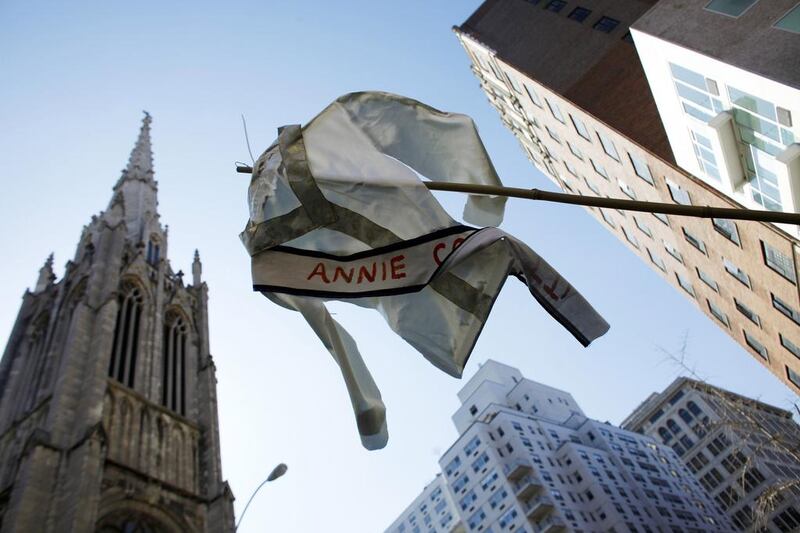Kalyan Ray's second novel No Country [Amazon.com] is nothing short of ambitious. His first novel, Eastwords [Amazon.com], a fantastical postcolonial take on A Midsummer Night's Dream and The Tempest, was published in India in 2005. In No Country, Ray not only aspires to offer the reader a multitude of themes dealing with identity, hybridity, migration and political upheaval, but in the course of more than 500 pages he also takes us on a geographical romp across three continents. No Country has a sprawling time span to match and the narrative switches back and forth between the 18th and the 20th centuries. But a novel of such grand proportions proves a difficult commitment to sustain.
The story begins in New York, 1989, where a middle-aged Indian couple are found murdered in their home. Their young daughter Devika lives not far from their house and is under police questioning. The plot then leaps back in time to County Sligo in western Ireland 1843. Here, in their small coastal village, Brendan and Padraig are childhood friends but grow up with vastly different ambitions. Leaving behind his mother and sweetheart, Padraig is taken by his patriotic fervour to Dublin, from where through a series of unforeseen events he drifts away from the Irish shores and finally ends up in India.
Back in Sligo, Brendan waits months for his friend’s return. When faced with starvation due to the onslaught of the Irish famine, he is compelled to take Padraig’s infant daughter Maeve, who has been left in his charge, and leave for America.
Ray then flits between generations and countries, beginning with Padraig’s grandson Robert Aherne in 1911, who growing up as an Anglo-Indian in Calcutta struggles to identify as either Indian or Irish.
The author is clearly eager to intertwine characters’ lives with their historical and political setting. Along the way there are continued references to people and incidents: for instance, Robert and his father witness the Jalianwallah Bagh massacre when they visit Punjab; and his first love is a young Anglo-Indian girl who later reinvents herself and becomes the celebrated actress Merle Oberon.
When the narrative moves to Vermont, where Maeve is living happily on a farm and then marries a Polish-Jewish immigrant, references are made to the pogroms then blazing in Eastern Europe.
In 1909, Maeve’s daughter Bibi has a child with Frankie, an Italian immigrant in New York. When she goes to search for him after he disappears, she finds work as a seamstress in a garment factory in New York. Here Ray recreates the horrors of the 1911 fire at the Triangle Shirtwaist factory where almost 150 workers perished.
The plot continues to move back and forth, and begins to sway under the weight of Ray’s over-ambitious narrative structure until the reader is almost giddy from the oscillations between the different characters, times and places.
A novel of such ambition faces the problem of bringing together the disparate sections so that they merge seamlessly. While the novel flows easily between Padraig and Brendan’s story and their rapidly changing circumstances, the latter half struggles to establish any sense of authenticity or fluidity.
The series of coincidences in the lives of the characters feels contrived and superficial and the historical and political settings are almost purposefully superimposed, so that at times it feels as if what flashes past are images on a background movie screen. While Ray has taken the time to plot clever twists and turns in the narrative, one almost wishes he could have spent a bit more time on kindling the dampness of the prose and the development of the characters.
Ray leads his characters through famine, fire, shipwrecks, murder and horrifying political and historical situations and yet his characters fail to come alive. The novel lacks the delicacy and poignancy that are a prerequisite for bringing alive fiction dealing with real historical and political events, and the continued onslaught of references by the second half of the novel begins to grate and feels pedantic.
No Country sets out to be a novel of great ambition and potential but it develops into a bulky and at times disparate bundle of individual narratives crying out to be given a more delicate touch. Yet remarkably, No Country still manages to engage and Ray definitely feels like a writer or filmmaker who should not be ignored.
Erika Banerji has written and reviewed for The Statesman, The Times of India, The Observer and Wasafiri. Her short fiction has appeared in several literary journals. She lives in London.
[ thereview@thenational.ae ]






